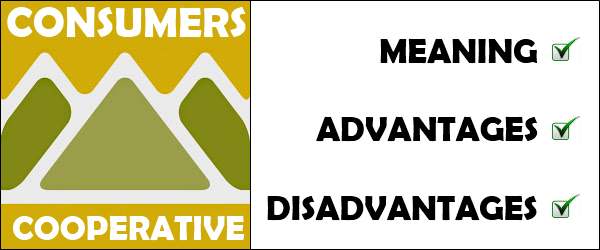Consumer Cooperative Stores | Meaning | Advantages | Disadvantages

Table of Contents
What are Consumer Cooperative Stores?
A consumer cooperative store is a retail unit owned and controlled by consumers. Any consumer can join the consumer cooperative store by buying its shares. Each member has only one vote irrespective of his shareholding. Members get dividend in proportion to their shares held in the cooperative store. Cooperative stores are run by the consumers themselves for their mutual benefits.
Advantages of Consumer cooperative stores
Consumer cooperatives offer the following advantages:
1. Consumers get goods of good quality
2. Goods are sold without adulteration
3. Goods are sold in correct measurement. Irregularities found in measurement of goods are avoided.
4. Middlemen are eliminated
5. Prices are comparatively cheaper
6. Regular supply of goods is assured.
7. No credit is allowed. So, there is no fear of bad debts.
8. Consumer cooperatives are located conveniently in residential areas, thus they are quite accessible.
Disadvantages of Consumer Cooperative Stores
Consumer cooperatives suffer from the following drawbacks:
1. There is paucity of funds
2. Often the managers and salesmen do not possess the requisite skill.
3. Accounts may not be kept on scientific basis.
4. Managing persons are not honest. They invariably swindle funds or divert stocks.
5. Members do not evince a keen interest in the functioning of the consumer cooperatives.
6. Stock keeping is expensive.
7. Enough publicity is not given.
8. Members do not cooperate with the authorities of consumer cooperatives.
9. Door delivery and other facilities are not proper.
10. People in the management of cooperatives are bureaucratic.
11. There is lack of coordination with other cooperatives.
Cooperatives owned by retailers
Cooperatives are owned and controlled by retailers. Retailers form cooperatives for joint purchasing and warehousing of merchandise. Finance is raised by issuing shares to members. The funds so mobilized are utilized for building warehouses and purchasing merchandise.

